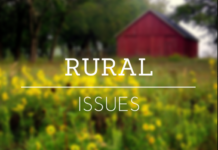MANHATTAN, Kan. – Although many Kansans have enjoyed warmer-than-usual weather in recent fall months, cold winter temperatures have begun to take hold in many parts of the state. With this in mind, it’s time to consider home fire safety for the winter, as well as how to manage the controlled burning season in the upcoming spring.
Winter is often the most dangerous time of the year for house fires. By December, every furnace in the country may be working at capacity, the fuel bill is probably causing sticker shock and every alternative-heating source at our disposal is likely being used.
Home and shop heating system maintenance should be done prior to winter, but it’s never too late to start that maintenance. Most fires are the result of lack of maintenance. Because the furnace worked last winter is not assurance that it will be functional for another year without maintenance. The old adage “an ounce of prevention is worth a pound of cure” rings true in this situation.
If you burn wood, corn, or other fuel in your fireplace or freestanding stove, clean the flue at least annually and more frequently if you burn a fuel that creates a buildup of byproducts in the flue. Chimney fires are preventable, and proper maintenance and monitoring will go a long way toward that prevention.
It’s also important to remember carbon monoxide this time of year. Carbon monoxide is known as the “silent killer” for good reason. One symptom of carbon monoxide poisoning is waking up in the morning with a headache.
Every year, faulty heaters cause unnecessary deaths. Frequently, when an ice storm occurs in Kansas and the electricity goes out, portable generators are moved into garages and plugged into a furnace. Often, people run gas space heaters in closed rooms. These scenarios are extremely dangerous and should never be practiced.
People can also suffer carbon monoxide poisoning from running cars inside of an enclosed garage. If you want to warm up the car before getting in, park it in the driveway and not the closed garage. Even with the door open, carbon monoxide can build to a toxic level.
Prepare for controlled burning
Springtime is traditionally when most controlled burning takes place. A controlled burn is a fire that serves a specific purpose, stays where it’s designated and is contained from start to finish. Unfortunately, many controlled burns start properly, but can get out of control and become wildfires. At that point, they can destroy property, require tax dollars to control, and in many cases, cause volunteer firefighters to miss work and time with their families.
Planning is crucial to having a successful burn, and it needs to start well before the first match strike. Is there enough help to control the burn? A brush pile surrounded by snow may be a one-person job; that same brush pile after the snow melts may require several hands.
Are there enough adequate forms of suppression? Would you need help from a fire department to put the fire out? Are the authorities aware of the planned burn? There are requirements for controlled burning in Kansas, so check what pertains to your burn. You’ll also be notified of impending weather that may affect your burn when you contact the authorities.
The Kansas Office of the State Fire Marshal has noted that wildfires seem to frequently occur the day following a red flag warning. Red flag warnings mean that if a fire starts on that day, it may be more difficult to control. Wildfires often occur the following day, because while people are vigilant on the red flag day, they tend to forget about the heavy fuels that carry over into the next day when the wind shifts.
When planning a controlled burn, consider a three-day window to be sure the fire is completely cold before the weather changes. Light fuels, such as a grass fire, may only require two days, but historically, many wildfires are the result of rekindling a controlled burn from the day before.
Be aware of the window of safety you need to safely manage your controlled burn. And, stay warm and safe this winter!




